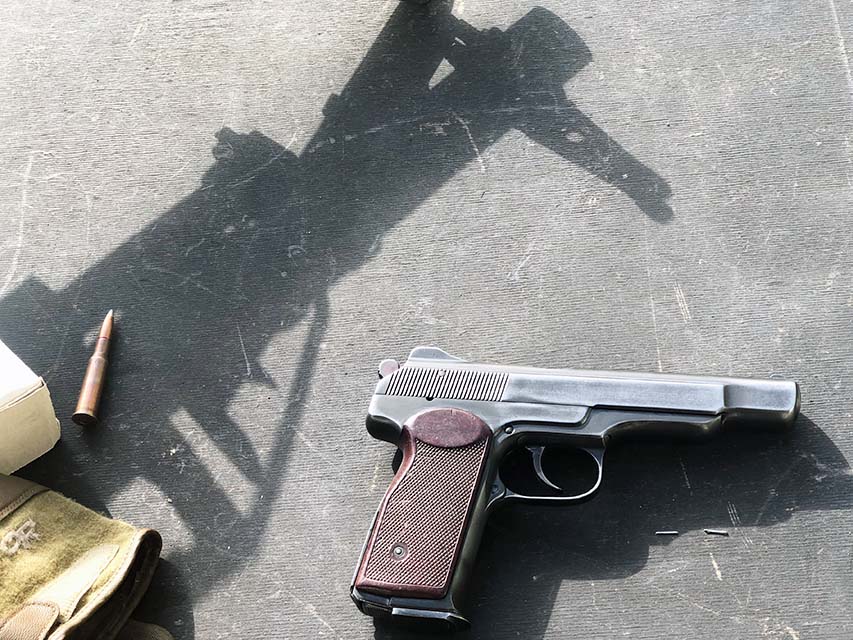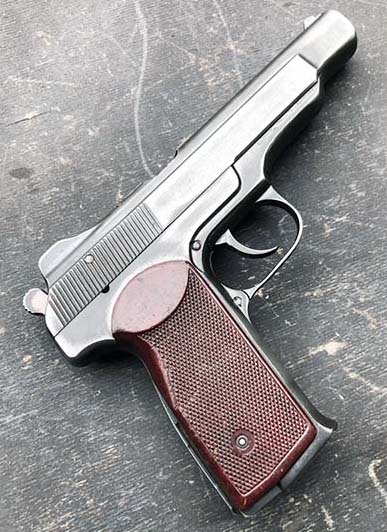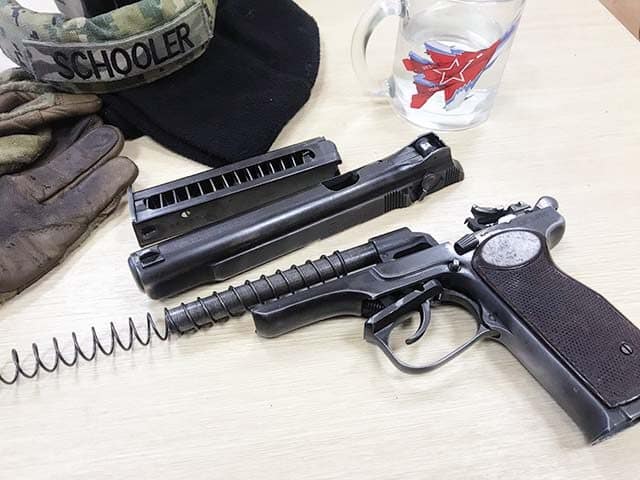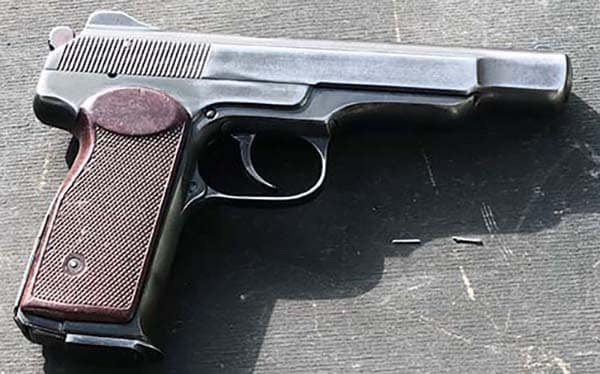Story & Photography by Lynndon Schooler
In Chechnya, the Stechkin Automatic Pistol (APS) is considered a badge of honor. Like the AKS-74U in the mountains of Afghanistan, the APS carries with it a social weight in the Caucasus that denotes command, courage and longevity in service to the state. It is also considerably a rarer sight among local combat arms in the region, adding to its intrigue. Despite being a 60-year-old design and having cultural reverence just as long, the sturdy long slide pistol is still fulfilling the role of a personal defense weapon among Russian special operations groups and air crews currently serving in Syria.
The pistol began development in 1948 in the hands of the young engineer Igor Yakovlevich Stechkin, the newly appointed 26-year-old designer and Tula native, at the Tula Central Design Bureau No. 14. This same bureau would become the famous Tula Instrument Design Bureau after the collapse of the Soviet Union, but before experienced more humble stats as one of the dozens of “central design teams” across the Union. In 1949, Stechkin had his first shop floor prototype of the APS (or Automatic Pistol of Stechkin in its native Russian), and after trials and series of improvements, it was adopted into Soviet service in 1951. This was a breakneck pace from concept, development and adoption, by any standard. The weapon was fielded simultaneously alongside the smaller and far more common Makarov Pistol PM (Pistolet Makarova) and was intended for soldiers with unique specialties, where wielding a Kalashnikov would not be reflective of their primary role. Armored crews, pilots, RPG-7 gunners and PK/M machine gunners were a few of the approved users. These soldiers would be exposed to more severe combat conditions in which a PM would not be sufficient for self-defense, but the APS, with its 20 rounds of double-stacked 9×18 Makarov and select-fire capability, would possibly close the gap.

Much like the PM, the APS features a fixed barrel. This feature improves grouping consistency and accuracy for single fire. The weapon’s accuracy in burst, when in the hands of a trained shooter, is more or less controllable when compared to other weapons of its type. This is due to the rate reducer located in the grip, which moderates the rate of fire. However, at the height of the Cold War and the further development of the USSR’s compact weapons program, the little APS soon lost its commission in 1958 and was placed in arsenal storage.

A Second Chance
In the criminal chaos of the 1990s, the APS saw a second life. Russian law enforcement agencies needed greater firepower over the PM, and full-sized Kalashnikov assault rifles over-penetrated in urban and pastoral criminal
situations. The Russian Ministry of Internal Affairs looked to submachine guns, but none, including the AKS-74U, were in sufficient production to arm both the armed services and the police force. Russia’s police special tactics groups, such as OMON, SOBR and others, began to purchase the moth-balled crates from Soviet warehouses and found, to their delight, the little APS.
These units had to overcome some minor inconveniences. The large shoulder stock, which doubled as a holster was too large to be comfortably carried on the belt by most officers. Many APS users also lacked the trigger time to fire the weapon on automatic with any practical effect. The weapon was not the choice for everyday use. Quickly, the agencies realized why the weapon was retired in the first place. However, the pistol excelled in accuracy and lower recoil over the PM, with an accelerated muzzle velocity. The agencies looked to the experience of the KGB, which never fully handed in their APS pistols, and in the 1970s alongside military intelligence, the GRU, encouraged the development of the APB, a silenced variant. A.S. Neugodov’s design, developed at the Vyatskie Polyany Machine-Building Plant, was essentially a converted APS. It was formally adopted in 197 and given the GRAU index of 6P13. It was produced by the venerable TsNIITOCHMASH, a key design bureau for various Spetsnaz equipment and modernizer of the APS.
The APB
The APB served in the hands of the Soviet armed forces, reconnaissance groups and the special tactics divisions of the Russian Ministry of Internal Affairs. The APB was used widely during the Afghanistan conflict from 1979 to 1989 and saw great effect among the Spetsnaz. It proved to be resilient in the harshest of environments and benefited from an upgraded stock. The lower profile wire design was more comfortable to stow and folded to attach to the suppressor. The bore of the suppressor was not centered but indexed higher to be closer to the standard sights. Its construction reduced the initial bullet velocity and reduced the report signature as designed. The barrel is fixed with two sets of ports, one near the chamber and one near the muzzle. This allows the expanding gasses to pass into the sound suppressing expansion chamber from the barrel sleeve. It is one of the earlier suppressors put into standard production within the Soviet Union, with a set of bent washers consisting of three baffles. Surprisingly, the APB is reported to have reduced shot dispersion over the original APS.

Test Results
Having personally tested the APS in Chechnya, with no stock attached, this author can testify that it is an outstandingly accurate pistol. At close range, the weapon maintains its accuracy even in short bursts. The weapon does feel heavy in the hand, being of all steel construction; however, it is manageable and contributes to lower felt recoil. Nonetheless, the APB and APS failed in their goals to be a PDW and a silenced submachine gun. Better designs fill this role and are currently deployed by the Russian forces. Still, these pistols have found a niche market and are still used by some of the most proficient fighters in the Russian military and intelligence services. Despite their shortcomings, this last of the machine pistols seems adamant to continue fighting for years to come.
| This article first appeared in Small Arms Review V23N10 (Dec 2019) |












